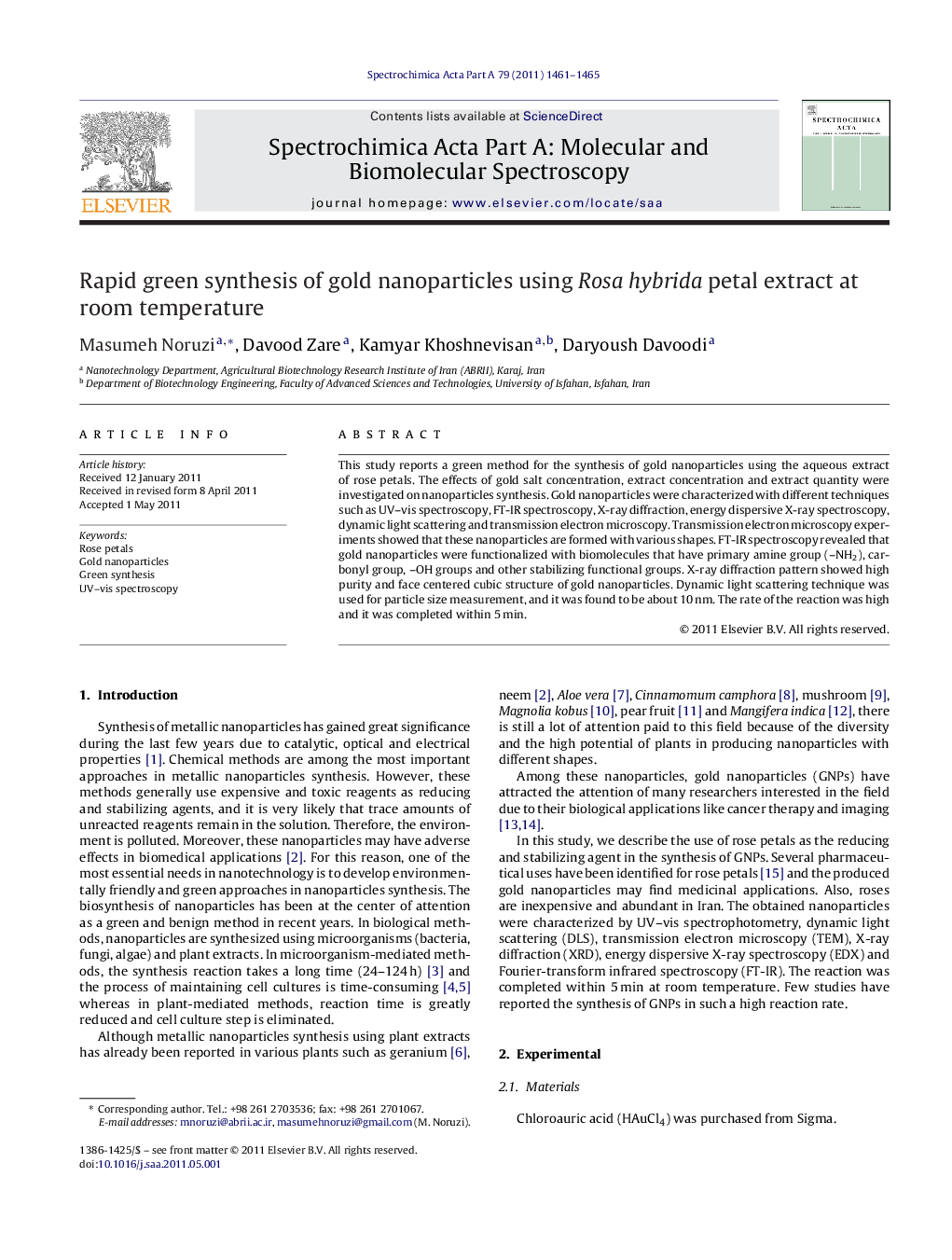| Article ID | Journal | Published Year | Pages | File Type |
|---|---|---|---|---|
| 1236547 | Spectrochimica Acta Part A: Molecular and Biomolecular Spectroscopy | 2011 | 5 Pages |
This study reports a green method for the synthesis of gold nanoparticles using the aqueous extract of rose petals. The effects of gold salt concentration, extract concentration and extract quantity were investigated on nanoparticles synthesis. Gold nanoparticles were characterized with different techniques such as UV–vis spectroscopy, FT-IR spectroscopy, X-ray diffraction, energy dispersive X-ray spectroscopy, dynamic light scattering and transmission electron microscopy. Transmission electron microscopy experiments showed that these nanoparticles are formed with various shapes. FT-IR spectroscopy revealed that gold nanoparticles were functionalized with biomolecules that have primary amine group (–NH2), carbonyl group, –OH groups and other stabilizing functional groups. X-ray diffraction pattern showed high purity and face centered cubic structure of gold nanoparticles. Dynamic light scattering technique was used for particle size measurement, and it was found to be about 10 nm. The rate of the reaction was high and it was completed within 5 min.
Graphical abstractFigure optionsDownload full-size imageDownload as PowerPoint slideHighlights► Gold nanoparticles were synthesized by a green and inexpensive method. ► The reaction was completed within 5 min. ► The reaction was performed at room temperature.
